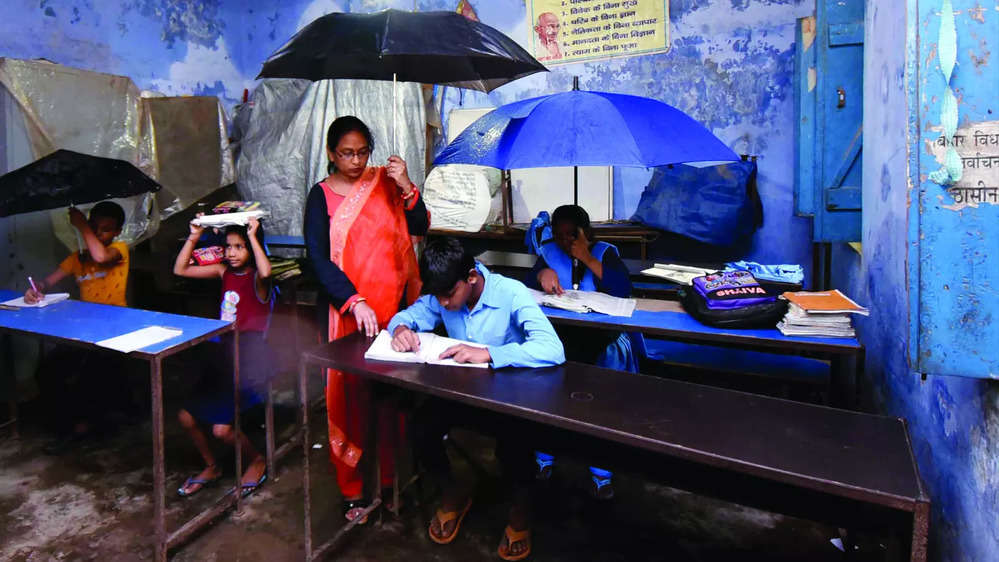Prime Minister Modi’s Viksit Bharat vision of India becoming a high-income country by 2047 is ambitious. It implies that Indians will become educated and skilled enough to merit high incomes by global standards.
However, the 2023 Annual Survey of Education Report is dismal. About a quarter of all youth (14-18 years) cannot read a class 2 text fluently in their regional language. Only 43% can solve simple division sums. ASER is a rural survey, and hopefully urban schools are better, but the bulk of the population is rural.
India has some world-class schools and colleges producing world-class graduates. But below this veneer, education is rotten. In a country of 1.4 billion, even a thin layer amounts to millions of people, who have achieved eminence in India and abroad. But govt schools in states are mostly pathetic. ASER reports show hardly any improvement in the last ten years.
By contrast, the Centre’s Kendriya Vidyalayas are good schools. They are designed for children of civil servants, and this elite has the clout to ensure quality education.
Education is a state subject, and state government schools are usually terrible.
I helped my driver’s two children, Saurabh and Lovely Khatri, get into a Kendriya Vidyalaya through the minister’s discretionary quota. After graduation and college, Saurabh was hired by TCS and is currently shifting to a new IT company. Lovely works in Cognizant, another top IT company. In one giant leap, they have moved from the bottom to top of the social ladder. That needs repetition a million-fold for India to become a high-income country.
But education is a state subject, and state govt schools are usually terrible. Their entire ecosystem is faulty. Teachers are absent or not teaching in half the schools, according to a well-known survey. In rural schools, many children come for mid-day meals rather than food for thought. Single-teacher schools with dozens of students of different grades cannot produce decent results.
Many teachers are politically oriented and connected to political parties, and this can ruin discipline. State govts use teachers not only for teaching but for managing elections, censuses, and other tasks (one teacher was asked to be a stand-in pujari at a temple). Teachers’ unions are powerful and resist any change. Many teachers, in both schools and colleges, say their careers depend on political connections more than the results of their students.
Many states may oppose what they see as the Centre encroaching on their turf
When an entire ecosystem is rotten, change is difficult. Breaking the mould meets huge resistance. What is the way forward?
The best approach is to start with a few Shandaar Kendras — centres of excellence— in substandard states and expand those in stages. That can gradually create a new ecosystem to displace the old. The effort will take decades, so an immediate start is needed.
One feasible solution, Modiji, is to start Shandaar Kendras as joint ventures between Kendriya Vidyalayas and state schools. These can be funded jointly by the centre and states, in the proportion of say 70:30. These Kendras should be protected from political interference. Some teachers can be permanent employees, but others should be staff from state schools who will work in the excellent schools for five years and then revert to the state system to try and spread the new ecosystem. Many can later man new Shandaar Kendras as the project expands. This will not meet the resistance that a total overhaul would, so it is politically non-disruptive.
Many states may oppose what they see as the Centre encroaching on their turf, despite the sweetener of majority funding by the Centre. So, we also need alternative ideas for non-intrusive reform.
Modiji, the simplest non-confrontationist path lies in your own hands. RSS runs over 12,000 Vidya Bharati schools with 3.4 million students. These schools focus on promoting knowledge of and pride in Hindu traditions. But it also admits Muslim and Christian children, of whom one topped the class 10 exam in Assam in 2016.
Most of these are elementary schools up to class 5. Surely, in search of Viksit Bharat, your top priority should be to upgrade Vidya Bharati schools to the level of Kendriya Vidyalayas. This means upgrading all class 5 schools to class 12 level and producing graduates who will get admission to the top colleges.
You will face no political interference for captive schools, and no shortage of funds. Industrialists will happily fund such excellent ventures.
RSS also runs some intermediate schools and regular colleges. These too need to be upgraded, striving ultimately for equivalence with St Stephen’s College, Delhi, or Presidency College, Kolkata. This will take decades. But by pushing your own schools and colleges to excellence, you can create a new educational ecosystem that will rub off on the states.


